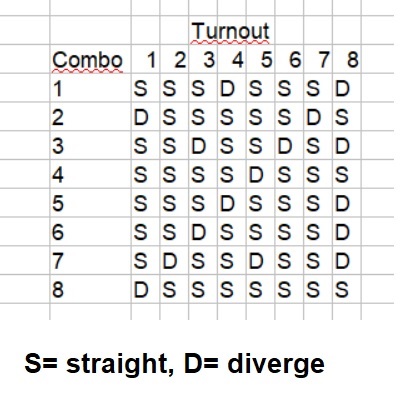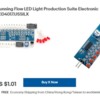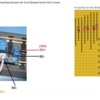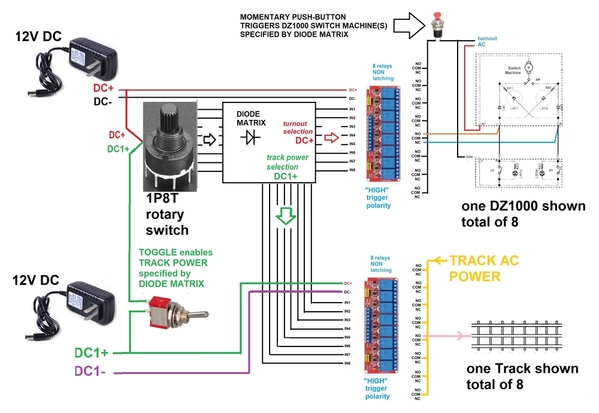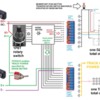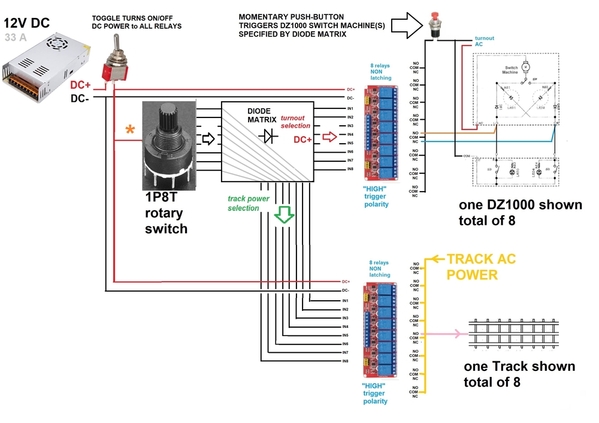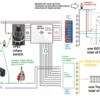I think we need to divide and conquer.
Issue 1. Track power control. I did not give this any consideration. So do you have some mechanism that detects a turnout's position (e.g., monitoring the LED indicator of the turnout itself) which then controls (e.g., via a relay) track power to a newly powered siding connected into the mainline?
Issue 2. The DCS Watchdog. If your entire yard is connected to a single TIU channel, are you familiar with the so called watchdog issue? In other words, when powering up a new block/siding from a TIU channel that has already been on for a while, the TIU does NOT generate the watchdog signal which keeps a newly powered DCS engine silent and in command-mode. There are workarounds including the so-called DCS PBW (Perpetual Barking Watchdog) developed right here on OGR!
Issue 3. Turnout position between sessions. If using the inexpensive relay modules, these are definitely the NON-latching type. When you turn power off to the module, the relays turn OFF. When you turn power back on, IF you are using the rotary-switch with diode-matrix, then the relays would immediately set themselves to the rotary-switch selection. So you would hear a simultaneous "click" in unison of any relays that are to be set per the diode-matrix.
Yes, there are latching relay modules but they are quite spendy. I occasionally look for inexpensive off-the-shelf latching relay modules as this would be useful for hooking up a DCS-AIU switch port to Tortoise type switch machines. So far, no luck. I found this photo I must have posted on OGR about latching relay options:
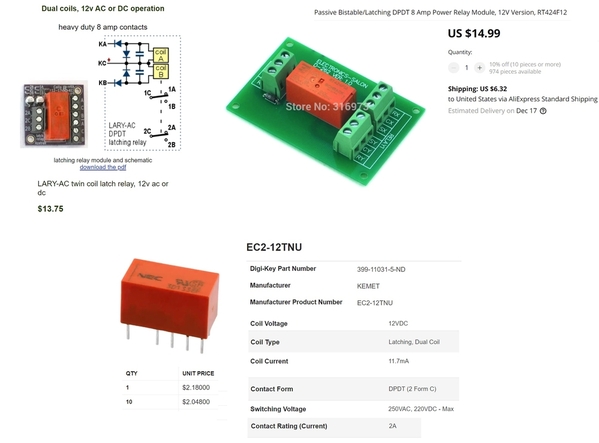
I just checked on eBay and you don't save much by going to a 2 or 4 channel latching relay module:

Now in your situation, since the DZ1000 switch machines are apparently relatively low power, you don't need an 8 Amp relay and you also don't need Dual Pole (DPDT) relays but that's somewhat moot if that's all that's out there!
So if the objective is to retain turnout position between operating sessions, and you choose latching relays as the "memory" mechanism, I'd suggest hand-wiring and soldering in the $2 latching relay. IIRC the pins are on a 0.1" grid so would drop in to the perforated prototype board used for the diode matrix.
BTW. If searching eBay for latching relays, you will find many listings that use the term "latching" or "bistable". But these relays revert to the "off" state when power is turned off to the module. Buyer beware.
BTW #2. Now this is getting fairly deep down the rabbit hole. But there are complications when using typical latching relays with a diode-matrix as proposed. I don't know the simplest way to explain it, but with non-latching relays or with the diode-matrix directly driving switch machines (as shown in the linked diagram), you only need to tell the relay or switch-machine when to turn ON (when to Diverge). A latching relay must separately be instructed to turn OFF (when to Straight). In other words, you tell a NON-latching relay to either DIVERGE or NOT DIVERGE. You tell a LATCHING relay to either DIVERGE or STRAIGHT. Seems like semantics but can have consequences in regards to the basic diode-matrix method.
Issue 4. Rotary switch side-effect.
To your point, if panel space makes it impractical to install 8 individual switches then you must deal with what happens when you rotate thru intermediate positions, say from #1 to #8. That is, as you go from #1-to-#2 the relays will instantly change to the #2 turnout pattern. And so on until you get to position #8. I guess you could turn the knob really quickly to hide the chattering relays! 
But in the rotary-switch's "defense" note that it provides the memory to effect what amounts to latching relay behavior! It is true that when you first power up the rotary-switch, diode-matrix, and NON-latching relay module it will take a fraction of the second for the 8 relays to go to their intended positions. But this happens in a blink of an eye. This needs confirmation but when a DZ1000 loses power, doesn't it maintain its position?
But getting back to the undesirable chatter of clicking relays attempting to track the rotary switch as it passes by intermediate positions. I realize you've proposed some kind of "go" button that you press after you've set the rotary switch. But in the spirit of OGR being a discussion forum, I think we can do better! I can imagine methods but while not expensive (a couple bucks in parts) nothing simple that doesn't require soldering. This one has me stumped just now; I also think any solution might be tied into the track power control Issue above. In other words, I'd like to hear more about how you want track power timed/controlled relative to turnouts changing position.
I'll now quit my rambling 




